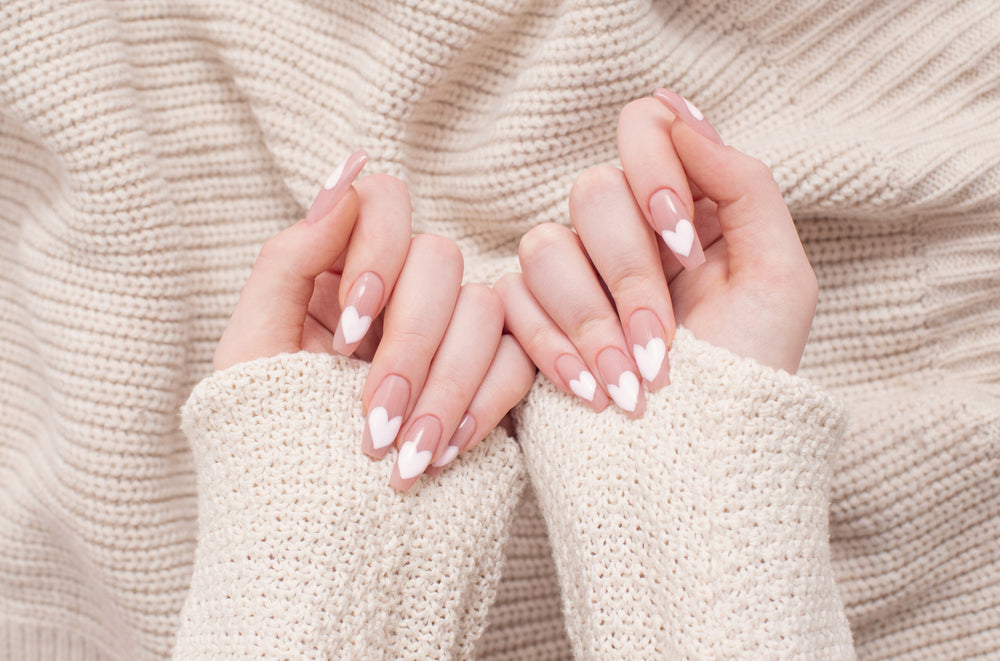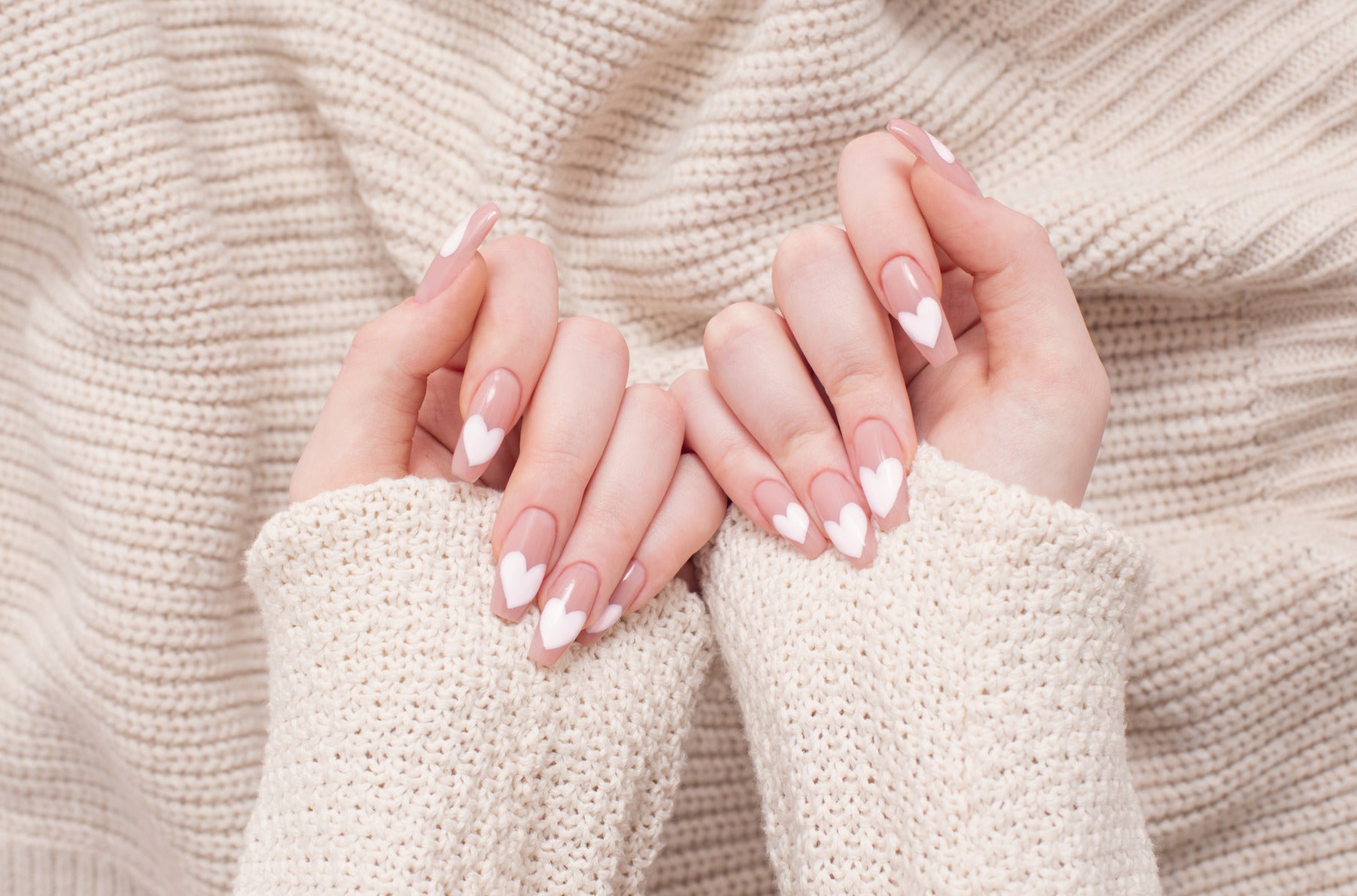How to Safely Remove Gel Polish Naturally
Gel polish is a popular choice for its durability and shine. However, removing it can be a challenge.
Traditional methods often involve acetone, a harsh chemical that can damage the skin and nails. Prolonged use can lead to dryness, peeling, and weakening of the nails.
But what if there was a safer, more natural way to remove gel polish?
This guide will show you how to remove gel polish without acetone. It provides step-by-step instructions, practical tips, and alternative methods.
It's important to remember that if you're unsure of how to remove gel polish that you should consult with a professional nail technician. The information provided in this article is merely information and should not be used as a substitute for professional guidance.
The goal is to help you confidently perform gel polish removal while preserving the health of the nails.
Whether you're an aspiring nail technician or simply interested in nail care, this guide is for you. Let's dive in and learn how to safely remove gel polish naturally.
Understanding Gel Polish and Its Removal Challenges
Gel polish stands out for its toughness and bright finish. Yet, these same qualities can make removal tricky.
Regular nail polish chips easily, but gel polish adheres more tenaciously to the nail bed. This strong bond provides its lasting quality but complicates its removal.
Traditional removal methods use acetone to dissolve gel polish. Unfortunately, acetone can strip the nails and skin of natural oils, leading to brittleness.
Understanding why gel polish is hard to remove is essential. This knowledge empowers you to choose gentle, effective techniques for maintaining nail health.
Preparing Your Nails for Removal
Before removing gel polish, it's crucial to prep your nails correctly. Starting with clean, dry hands ensures a smoother process.
Begin by trimming your nails to a reasonable length. This minimises the surface area you'll need to treat and manage.
Next, wash your hands thoroughly using mild soap. This removes oils and dirt from the nail surface, ensuring better results.
Finish this preparation by drying your hands completely. Moisture can interfere with the effectiveness of the natural removal methods.
Creating a solid foundation through proper preparation can enhance the ease and success of gel polish removal.
Buffing the Surface
Buffing is a crucial step in gel polish removal. This process helps break the top seal of the gel polish.
Use a fine-grit buffer to lightly rub the nail surface. Be gentle to avoid damaging the natural nail underneath.
Focus on the gel polish and avoid applying excessive pressure. Proper buffing allows the natural removal solutions to penetrate better.
Completing the buffing step prepares your nails for the next phase of removal. It enhances the results while preserving nail health.
Natural Removal Methods
Using natural methods can be an effective way to remove gel polish without acetone. These methods preserve nail health by using gentle ingredients.
Natural solutions are particularly beneficial for individuals with sensitive skin or nails. They provide a safe alternative to harsh chemical removers.
Vinegar and Lemon Juice Technique
This method uses two common household items: white vinegar and lemon juice. The acidity of these ingredients aids in breaking down gel polish.
Start by mixing equal parts of white vinegar and lemon juice. This creates a solution powerful enough to act on the polish.
Next, gently buff your nails, and soak a cotton ball in the mixture. Place one soaked cotton ball on each nail.
Wrap each nail with a small piece of foil to secure the cotton ball in place. This step ensures maximum effectiveness.
Let your nails soak for about 10-15 minutes. Afterward, use a wooden stick or cuticle pusher to gently scrape off the softened polish.
- Mix vinegar and lemon juice equally
- Buff and soak cotton balls
- Wrap nails in foil
Finish by washing your hands and applying moisturiser. This step helps maintain hydration and overall nail health.
Warm Water, Salt, and Olive Oil Soak
Another natural method involves using warm water, salt, and olive oil. These ingredients combine to soften and gently abrade gel polish.
Prepare a bowl of warm water and add a tablespoon of salt. Stir until the salt dissolves completely.
Add a few drops of olive oil to the mixture. This oil provides moisture and prevents excessive dryness during the process.
Submerge your nails in the solution and let them soak for 20-30 minutes. This period allows the gel polish to soften significantly.
Once soaked, gently try to peel off the gel polish starting from the edges. The salt helps to lightly buff away any residue.
- Dissolve salt in warm water
- Add olive oil for moisture
- Soak and gently peel polish
Afterward, rinse your hands and apply a nourishing moisturiser. This last step helps to restore your skin and nails.
Commercial Non-Acetone Removers
For those seeking convenience, commercial non-acetone removers offer a viable option. They generally work slower but protect nail health.
These removers often contain ethyl acetate or isopropyl alcohol. Both are milder solvents compared to acetone, thus gentler on nails.
To use, saturate a cotton ball with the remover and place it on the nail. Press lightly and allow it to sit for several minutes.
After enough time has passed, gently rub the cotton ball against the polish. This action should lift the gel polish with less damage to your nails.
Aftercare: Moisturising and Strengthening
Proper aftercare is crucial following gel polish removal. This ensures your nails and cuticles remain healthy and nourished. Post-removal, your nails might feel dry or weak. This is common, but easily addressed with the right care. Moisturisation and strengthening are two key components of an effective aftercare regimen. Implementing these steps helps to maintain the overall health and resilience of your nails.
Moisturising the Nails and Cuticles
Moisturising is vital for nail health, especially after using natural removal methods. Gel polish removal can lead to dryness and brittle nails. To counteract this, apply a rich cuticle oil or hand cream. Focus particularly around the cuticles and nail beds. A daily routine helps keep your nails flexible and less prone to breaking. Make sure to massage the product in for better absorption and increased circulation.
Using Nail Strengtheners
Nail strengtheners provide an additional layer of protection. They help rebuild the natural strength of your nails post-removal. Apply a nail strengthener in the form of a clear polish. This not only reinforces the nail but can also smooth out any uneven surfaces. Use the strengthener as part of your weekly routine. It's essential to allow your nails time to recover, especially before applying a new gel polish.
Tips for Aspiring Nail Technicians
Developing a successful nail technician career includes mastering various techniques. Emphasising natural removal options can set you apart. Clients appreciate safer, healthier alternatives to traditional methods.
- Educate clients on the benefits of non-acetone techniques.
- Keep abreast of new natural products and innovations.
- Practice regularly to refine your removal skills and efficiency.
Adapt these tips into your daily routine, enhancing both your skills and customer satisfaction.
Offering Natural Removal Services
Integrating natural removal services can attract a discerning clientele. Many clients seek gentle methods to avoid harsh chemicals. Start by crafting a dedicated service package focused on non-acetone techniques.
Inform clients about the advantages, emphasising nail health. This knowledge helps build trust and encourage repeat business. Cater to clients with sensitivities by highlighting less aggressive removal methods.
Promote these services through social media, showing results. Visual proof can be compelling. A well-structured service menu will broaden your customer base and boost your reputation.
Continuous Learning and Practice
Continuous learning is vital for staying competitive. The beauty industry constantly evolves, requiring technicians to be proactive.
- Attend workshops and online courses for new insights.
- Join forums and communities for knowledge sharing.
- Experiment with emerging products and tools.
Hands-on experience and feedback are invaluable for improvement. Regular practice sharpens your techniques, making you more adept at natural removal methods. Embrace the learning curve as a pathway to becoming a well-rounded nail technician.
Conclusion and Encouragement
Choosing natural methods for gel polish removal promotes nail health. By mastering these techniques, you offer clients a safer option.
Stay committed to refining your skills. With dedication, you’ll excel as a nail technician, delivering superior care in every service. Let your passion for natural solutions lead the way.






